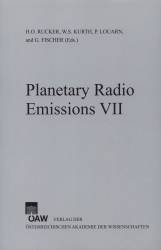
Planetary Radio Emissions VII, pp. 389-390, 2011/12/28
Proceedings of the 7th International Workshop on Planetary, Solar and Heliospheric Radio Emissions held at Graz, Austria, September 15–17, 2010

Solar Orbiter is an M-class mission in the ESA Science Programme Cosmic Vision 2015 – 2025 having an orbit with perihelion as low as 0.28 AU. The Radio Plasma Waves (RPW) Analyzer on board will provide new insights into the microscale phenomenon, the propagation modes of the radio waves and the localization of their source regions. The three electric antennas (each 5 meters long) are designed to be mounted on booms in a perpendicular plane to the spacecraft-Sun axis. Effective antenna lengths and directions are different from the physical ones due to their coupling with the spacecraft body. These parameters have been investigated considering various antenna placements on the spacecraft body [Rucker et al., this issue]. Results indicate that all effective antenna directions will be slightly tilted towards the Sun. This paper discusses a possible accuracy of the Direction Finding (DF) with respect to this tilt angle and uncertainties of the effective antenna parameters.